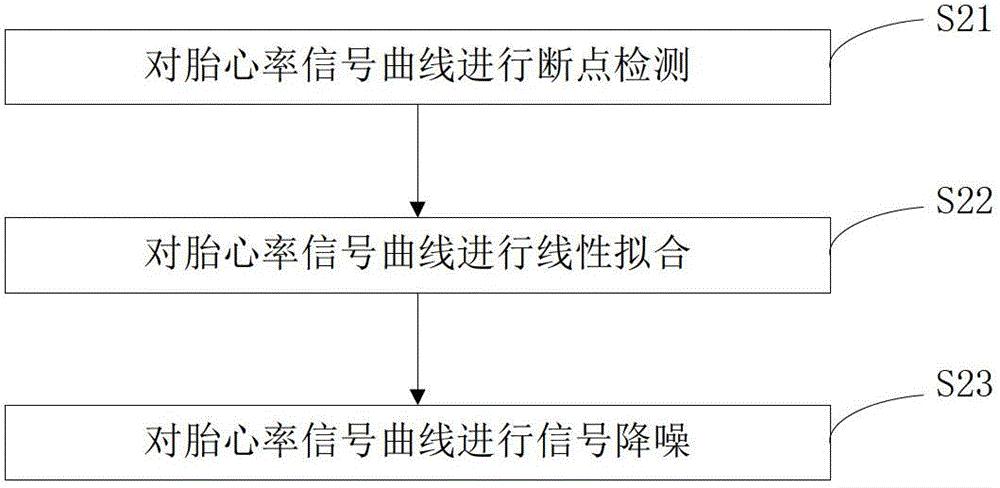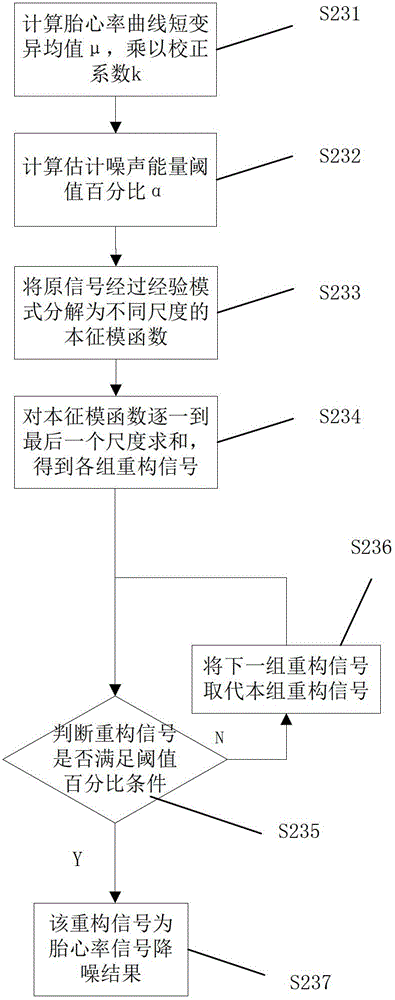Algorithm for automatically recognizing fetal heart rate baseline
An automatic identification and fetal heart rate technology, applied in the measurement of pulse rate/heart rate, etc., can solve the problems of wrongly estimated baseline, decrease, baseline elevation, etc., and achieve the effect of reliable fetal heart rate monitoring results
- Summary
- Abstract
- Description
- Claims
- Application Information
AI Technical Summary
Problems solved by technology
Method used
Image
Examples
Embodiment Construction
[0047] The specific embodiment of the present invention will be further described below in conjunction with accompanying drawing:
[0048] refer to figure 1 , a kind of fetal heart rate baseline automatic identification algorithm, this algorithm comprises the following steps:
[0049] S1, collecting the fetal heart rate signal;
[0050] S2. Perform curve optimization processing on the above-mentioned collected fetal heart rate signal;
[0051] S3. Perform feature extraction on the optimized fetal heart rate signal curve, and use a clustering analysis algorithm to cluster the extracted feature points into two feature parts;
[0052] S4. Distinguish the above two characteristic parts into a baseline part and a non-baseline part according to the distinguishing condition;
[0053] S5. Perform smoothing filtering on the identified baseline part, so as to obtain a final estimated fetal heart rate baseline.
[0054] refer to figure 2 , further as a preferred embodiment, the ste...
PUM
 Login to View More
Login to View More Abstract
Description
Claims
Application Information
 Login to View More
Login to View More - R&D
- Intellectual Property
- Life Sciences
- Materials
- Tech Scout
- Unparalleled Data Quality
- Higher Quality Content
- 60% Fewer Hallucinations
Browse by: Latest US Patents, China's latest patents, Technical Efficacy Thesaurus, Application Domain, Technology Topic, Popular Technical Reports.
© 2025 PatSnap. All rights reserved.Legal|Privacy policy|Modern Slavery Act Transparency Statement|Sitemap|About US| Contact US: help@patsnap.com



